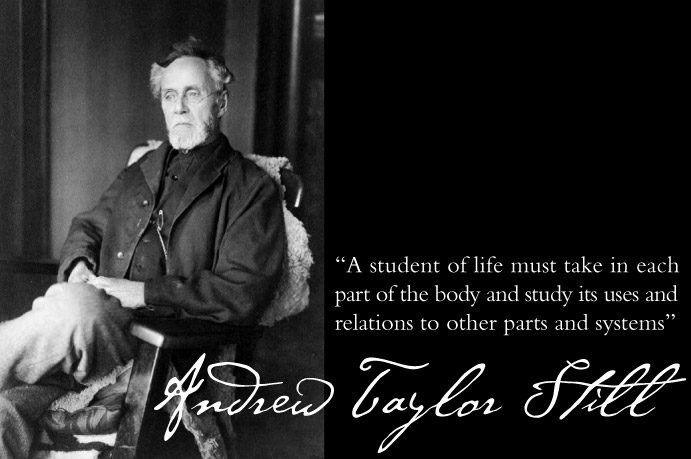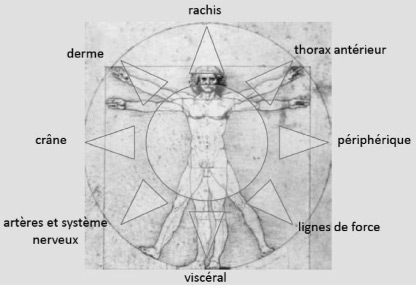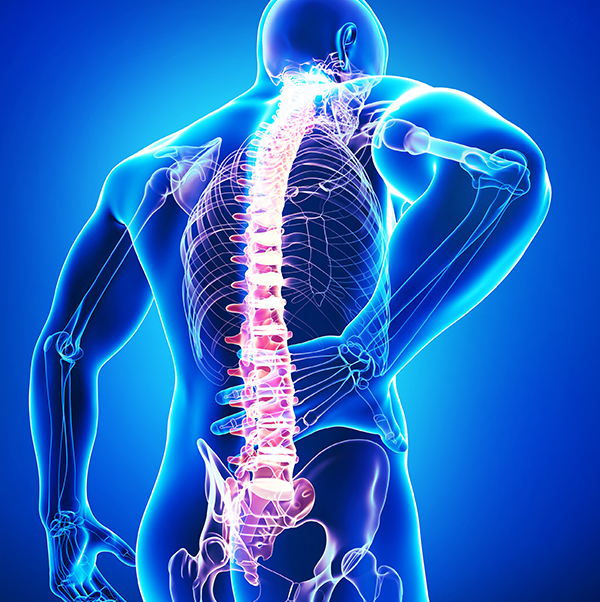What is Osteopathy?
All current medical literature points to the fact that the body works as one harmonious system, rather than as a collective grouping of separate parts. Osteopathic medicine has long known and studied this truth and thus has offered a unique approach to diagnosis and treatment.
Osteopathic medicine was founded in 1874 by a medical physician named Andrew Taylor Still.

Osteopathy is dedicated to the treatment of the entire patient, rather than approaching a patient’s symptoms in a crisis-orientated approach.
This respect for, and study of the entire functioning of the human system has led to various means of diagnosis and treatment. Perhaps the most recognisable means of treatment includes that of joint manipulation, whereby the physician uses a hands-on approach to ensure the body is moving normally.
This normal motion ensures that all innate healing systems are free to work unhindered to generate a therapeutic process.
Osteopathic Concept
The human body is a unified organism – all body systems including the musculoskeletal system, operate in unison and disturbances in one system can alter functions of other systems.
The body’s musculoskeletal system is central to the patient’s well being – this system includes the bones, muscles, tendons, fascia, tissues, fluid body, nerves and spinal column.

The musculoskeletal system as well as being prone to mechanical disorders, reflects many internal illnesses and may aggravate or accelerate the process of ‘dis-ease’ in other body systems.
The body always has a natural tendency toward health – osteopathic practice is designed to support, stimulate and initiate the body’s trend toward health.
Osteopathy is a system of manual medicine which recognises the important link between the structure of the body and the way it functions. It is a system of diagnosis and treatment with a well differentiated philosophy that practice a "whole person" approach in healthcare.
In Australia, osteopaths are government registered practitioners who complete minimum accredited university training in anatomy, physiology, pathology, general healthcare diagnosis and osteopathic techniques.
Osteopaths are primary healthcare practitioners and are trained to recognise conditions that require medical referral. They are also trained to perform standard examinations of the musculoskeletal, cardiovascular, respiratory and nervous systems.
Osteopathy is covered by most private health funds and by Medicare’s Enhanced Primary Care (EPC) Plans.
The list of conditions that can be helped or managed at this practice is exhaustive but some of the more common ones are listed below:
- Neck Pain, Whiplash
- Lower Back Pain, Sciatica
- Thoracic Pain and Rib Problems
- Headaches, Migraines, Facial Pain
- Shoulder, Rotator Cuff Strains
- Elbow, Wrist and Hand Injuries
- Postural Problems
- Pregnancy Related Conditions
- Dizziness, Benign Positional Vertigo
- Asthma
- Menstrual Disorders
- Abdominal / Intestinal Pain & Dysfunction
- Occupational Strains
- Knee Strains
- Foot/ Ankle disorders
- Colic in Infants
- Hyperventilation / Panic Attacks
- Hip Pain and Restriction
- Delayed Development
